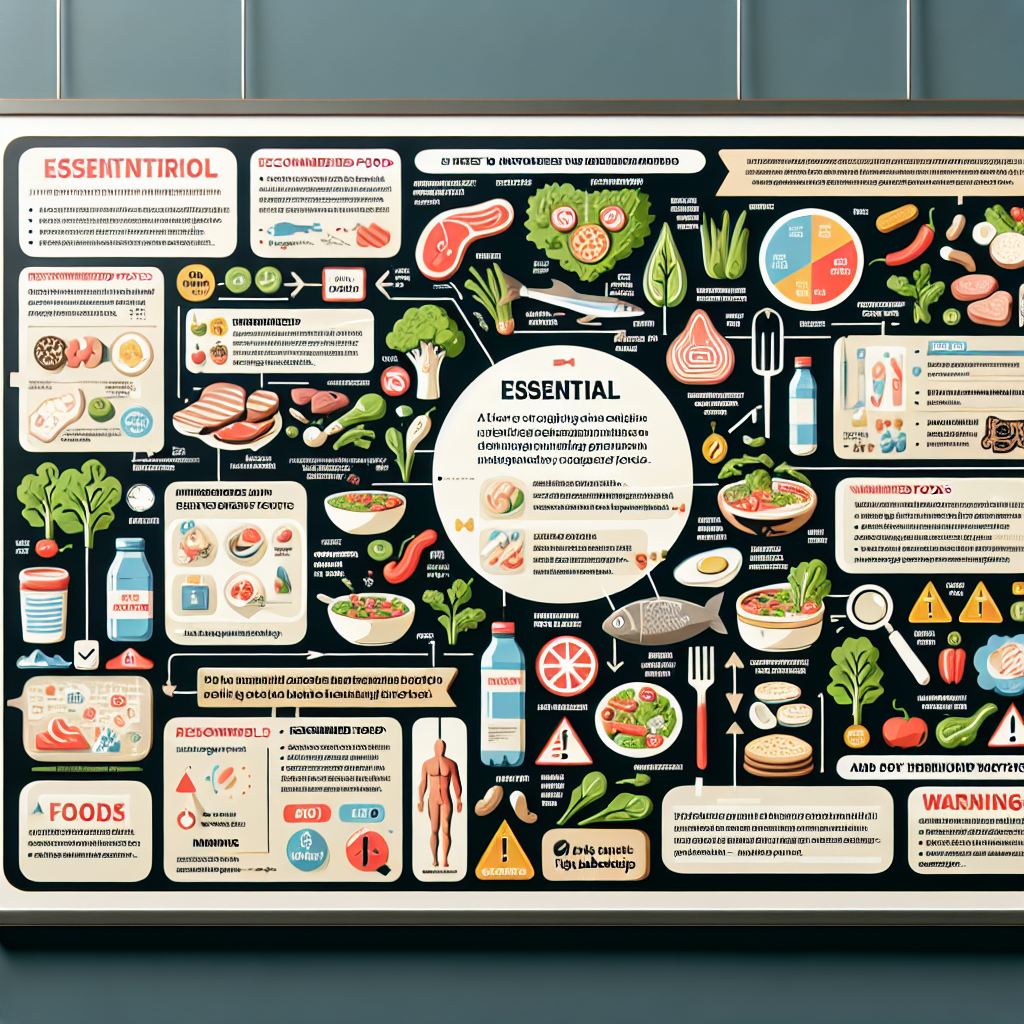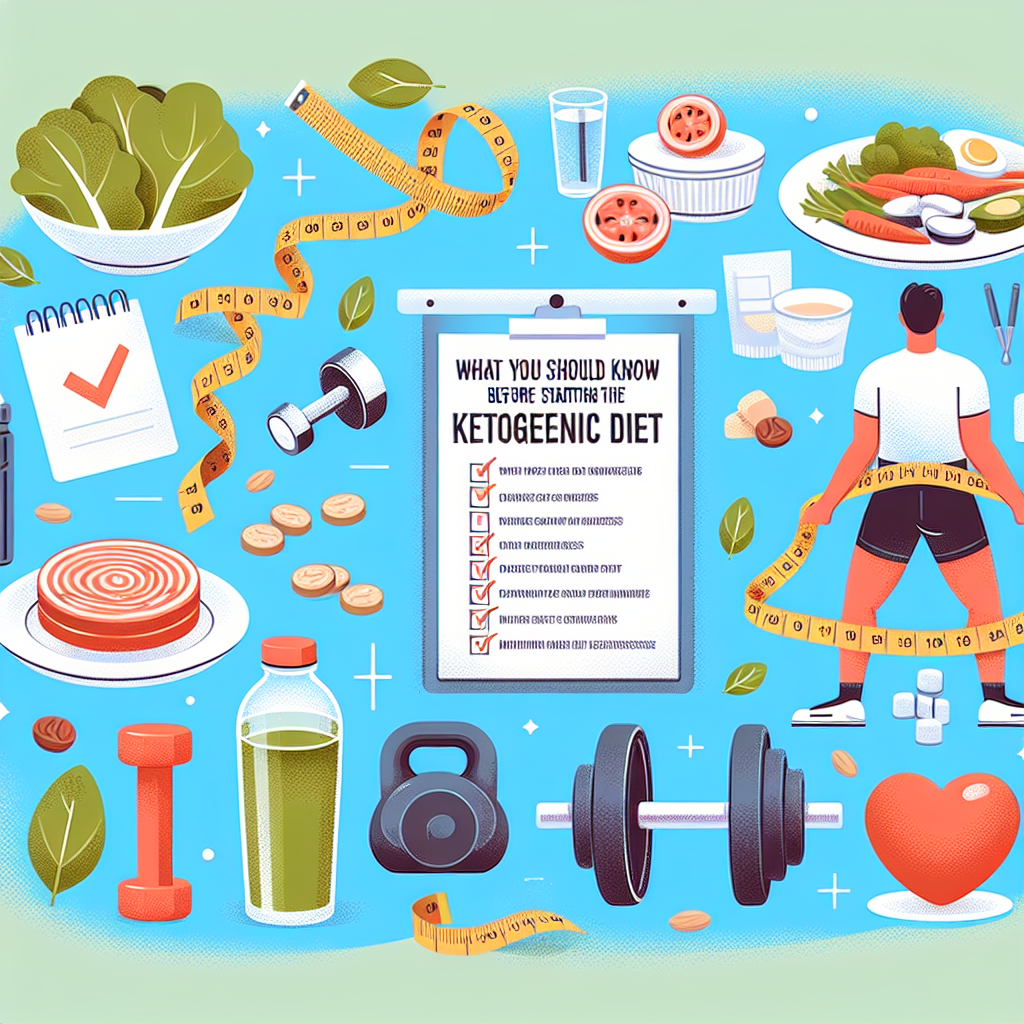What You Should Know Before Starting the Ketogenic Diet

Discover what you need to know before starting the Ketogenic Diet. Equip yourself with the right knowledge to make your health journey successful. Visit www.myvibrantvitality.com today.
Understanding the Basics of the Ketogenic Diet Before You Start
The ketogenic diet, often referred to as the keto diet, has gained significant popularity in recent years. This low-carb, high-fat diet is lauded for its potential benefits, including weight loss, improved cognitive function, and even disease prevention. However, before embarking on this dietary journey, it’s crucial to understand the basics of the ketogenic diet.
The ketogenic diet is a dietary regimen that focuses on high-fat, adequate-protein, and low-carbohydrate intake. The primary goal of the diet is to get your body into a metabolic state known as ketosis. In this state, your body, deprived of glucose from carbohydrates, starts burning fat for energy. This process produces ketones, which the body uses as an alternative energy source.
The standard ketogenic diet typically involves consuming 70-75% of your daily calories from fat, 20% from protein, and only 5-10% from carbohydrates. This drastic reduction in carbohydrate intake can be a significant shift from the typical Western diet, which often includes a high intake of carbs.
Before starting the ketogenic diet, it’s essential to understand that this diet is not just about cutting carbs but also about increasing your fat intake significantly. This means that your meals will primarily consist of foods like meat, fish, eggs, cheese, nuts, avocados, and low-carb vegetables. Foods high in sugar and other carbohydrates, such as bread, pasta, rice, and most fruits, are generally avoided.
It’s also important to note that the ketogenic diet is not a one-size-fits-all solution. The diet can be modified to suit individual needs and preferences. For instance, there are several variations of the ketogenic diet, including the cyclical ketogenic diet (CKD), the targeted ketogenic diet (TKD), and the high-protein ketogenic diet. These versions involve adding carbs around workouts or on specific days, or increasing protein intake, respectively.
While the ketogenic diet has been associated with several health benefits, it’s not without potential risks and side effects. The initial transition to a ketogenic diet can be challenging. Many people experience what’s known as the “keto flu,” a group of symptoms including headache, fatigue, and nausea as the body adjusts to burning fat for fuel. Moreover, long-term adherence to the diet may lead to nutrient deficiencies and other health issues if not properly managed.
Therefore, it’s advisable to consult with a healthcare professional or a registered dietitian before starting the ketogenic diet. They can provide personalized advice based on your health status and nutritional needs. It’s also recommended to monitor your health regularly while on the diet, including checking your blood sugar levels, cholesterol levels, and nutrient intake.
In conclusion, the ketogenic diet is a unique dietary approach that can offer significant health benefits when done correctly. However, it requires a substantial shift in your eating habits and should not be undertaken lightly. Understanding the basics of the ketogenic diet, including its principles, food choices, variations, potential benefits, and risks, is crucial before you start. With proper planning and professional guidance, the ketogenic diet can be a safe and effective way to achieve your health goals.
Potential Side Effects and How to Manage Them: Preparing for the Ketogenic Diet

The ketogenic diet, often referred to as the keto diet, has gained significant popularity in recent years due to its potential benefits for weight loss, diabetes management, and even neurological health. However, like any significant dietary change, it’s essential to understand the potential side effects and how to manage them before embarking on this low-carb, high-fat eating plan.
One of the most common side effects experienced by those new to the ketogenic diet is the “keto flu.” This term refers to a collection of symptoms, including fatigue, headaches, nausea, and irritability, that can occur as your body adjusts to its new fuel source. These symptoms are typically temporary and can be managed by staying hydrated, getting plenty of rest, and ensuring you’re consuming enough calories.
Another potential side effect of the ketogenic diet is constipation. This can occur due to the reduced intake of fiber-rich foods like fruits, vegetables, and whole grains. To manage this, it’s important to include as many high-fiber, low-carb foods as possible in your diet. These might include avocados, nuts, seeds, and certain non-starchy vegetables. Additionally, staying well-hydrated and engaging in regular physical activity can also help promote regular bowel movements.
The ketogenic diet can also lead to nutrient deficiencies if not properly planned. This is because many nutrient-rich foods, such as fruits and whole grains, are limited on this diet due to their carbohydrate content. To avoid this, it’s crucial to consume a variety of nutrient-dense, low-carb foods and consider taking a multivitamin or other dietary supplements as needed.
Furthermore, some individuals may experience an increase in their cholesterol levels when following a ketogenic diet. This is due to the high intake of saturated fats, which can raise levels of low-density lipoprotein (LDL), often referred to as “bad” cholesterol. If you have a history of heart disease or high cholesterol, it’s important to discuss this with your healthcare provider before starting the ketogenic diet. They may recommend a modified version of the diet that includes more unsaturated fats, or they may advise against it altogether.
Lastly, it’s important to note that the ketogenic diet can affect individuals differently. Some people may experience significant weight loss and improvements in their blood sugar levels, while others may find the diet difficult to follow or experience negative side effects. Therefore, it’s crucial to listen to your body and work with a healthcare provider or dietitian to ensure the diet is safe and effective for you.
In conclusion, while the ketogenic diet can offer potential health benefits, it’s not without its potential side effects. By understanding these and knowing how to manage them, you can better prepare for the transition to this eating plan. Remember, it’s always important to consult with a healthcare provider before starting any new diet or lifestyle change. They can provide personalized advice based on your individual health needs and goals.
The Role of Macros and Meal Planning in the Ketogenic Diet: What You Need to Know Before Starting
The ketogenic diet, popularly known as the keto diet, has gained significant attention in recent years due to its potential benefits for weight loss, diabetes management, and even neurological health. However, before embarking on this dietary journey, it’s crucial to understand the role of macronutrients and the importance of meal planning in the ketogenic diet.
Macronutrients, or “macros,” are the nutrients our bodies need in large amounts to function optimally. They include carbohydrates, proteins, and fats. In a standard diet, carbohydrates typically make up the largest portion of our daily caloric intake. However, the ketogenic diet flips this ratio on its head. The diet calls for a drastic reduction in carbohydrate intake, moderate protein consumption, and a significant increase in dietary fats.
The ketogenic diet typically consists of approximately 70-75% fats, 20-25% protein, and only 5-10% carbohydrates. This shift in macronutrient distribution forces the body into a metabolic state known as ketosis, where it burns fat for energy instead of carbohydrates. Achieving and maintaining this state is the primary goal of the ketogenic diet, and understanding the role of macros is crucial to this process.
The high-fat, low-carb nature of the ketogenic diet can be a significant shift from what most people are accustomed to. This is where meal planning comes into play. Meal planning is not just about deciding what to eat; it’s about ensuring that you’re consuming the right proportions of macronutrients at each meal.
Without careful meal planning, it’s easy to consume too many carbohydrates or not enough fats, which can prevent the body from entering ketosis. Therefore, it’s essential to plan your meals around foods that are high in healthy fats, moderate in protein, and very low in carbohydrates. This might include foods like avocados, fatty fish, nuts and seeds, and low-carb vegetables.
Meal planning for the ketogenic diet also involves careful consideration of portion sizes. Even foods that are keto-friendly can interfere with ketosis if consumed in excess. For example, while proteins are a necessary part of the diet, too much protein can be converted into glucose by the body, which can kick you out of ketosis.
Moreover, meal planning can help to ensure that you’re meeting your nutritional needs while on the ketogenic diet. While the focus is often on macronutrients, it’s also important to consider micronutrients. A well-planned ketogenic diet should include a variety of nutrient-dense, whole foods to provide essential vitamins and minerals.
In conclusion, understanding the role of macronutrients and the importance of meal planning is crucial before starting the ketogenic diet. The diet requires a significant shift in the way we think about food and nutrition, and careful planning is necessary to ensure success. By focusing on high-fat, low-carb foods and carefully considering portion sizes, you can help your body transition into ketosis and potentially reap the benefits of this popular diet. However, as with any significant dietary change, it’s always a good idea to consult with a healthcare professional before getting started.